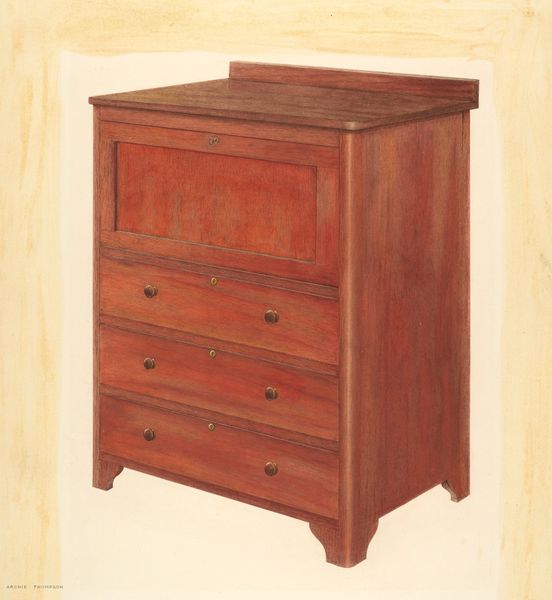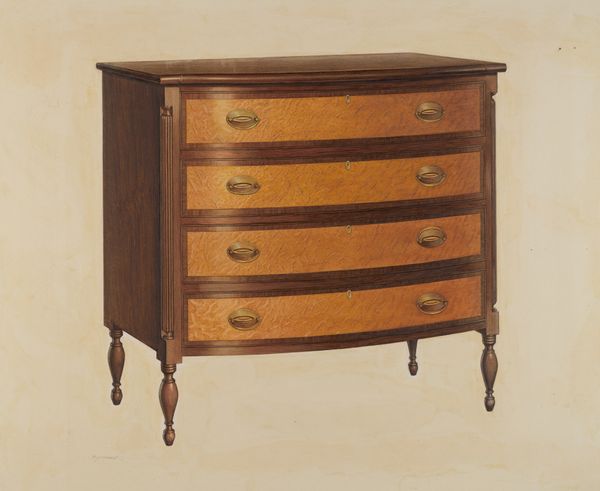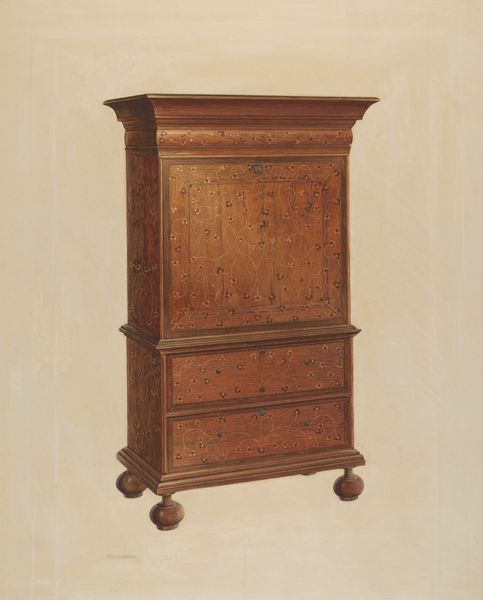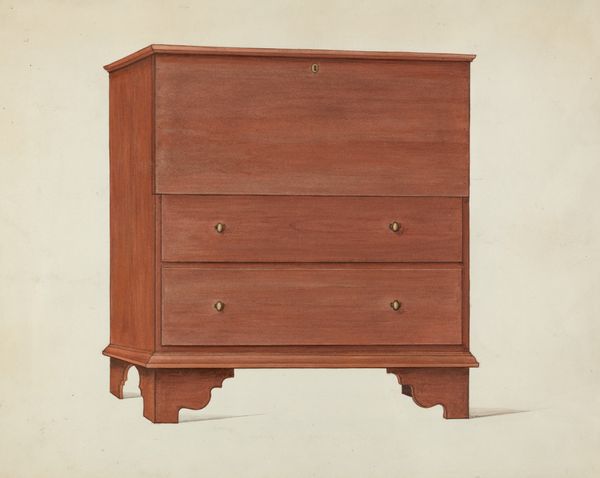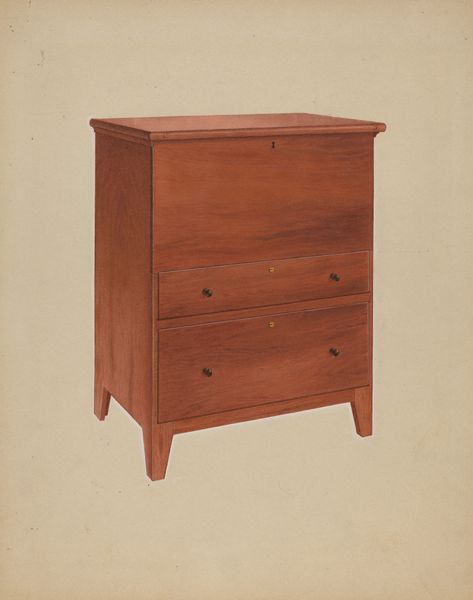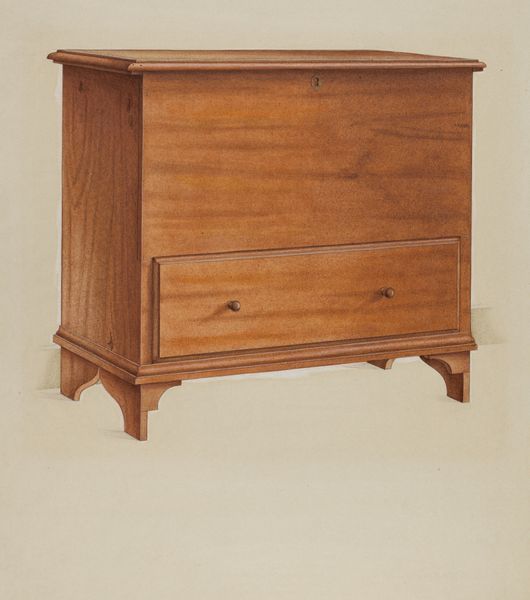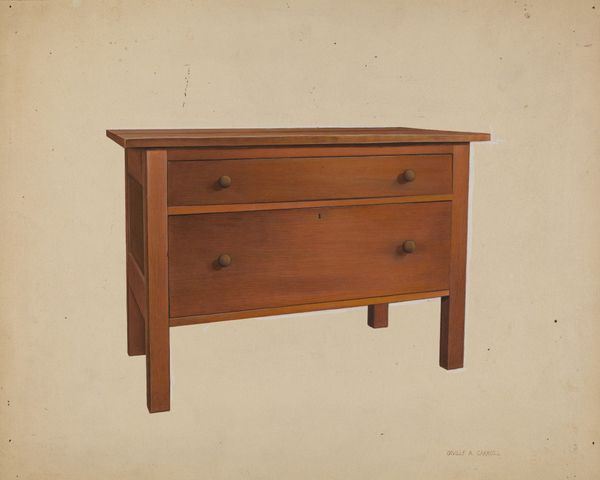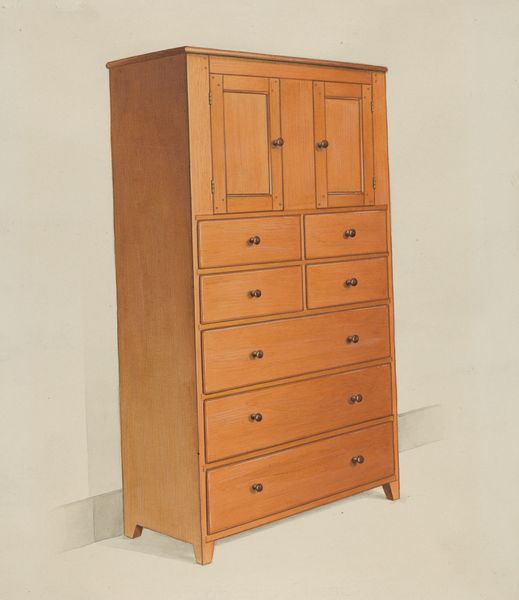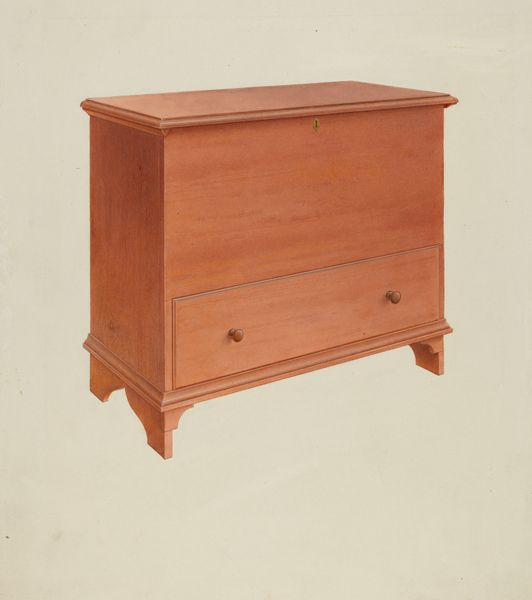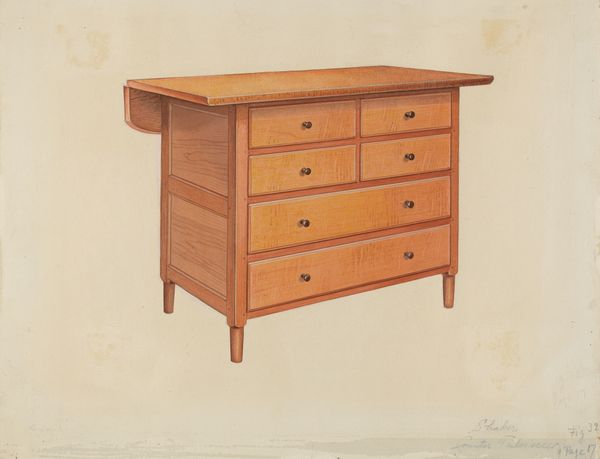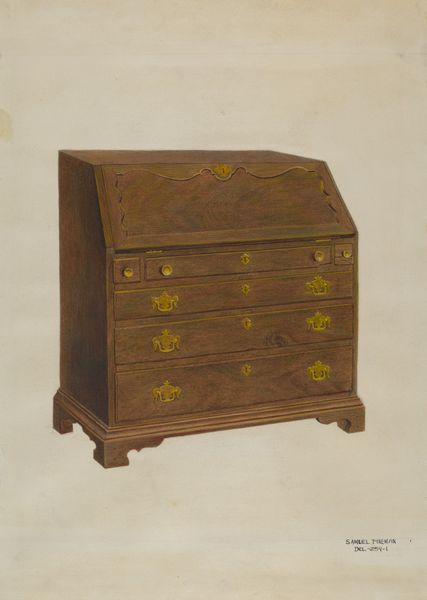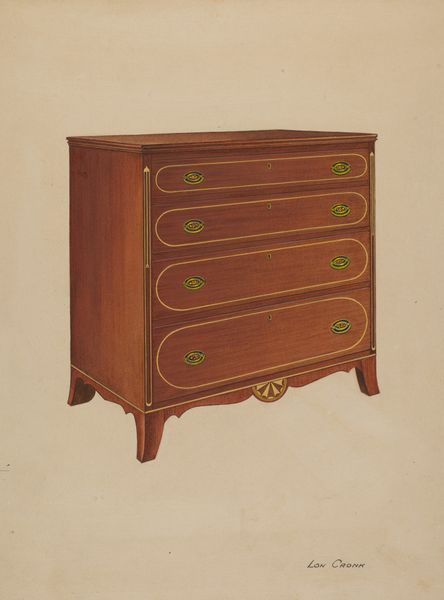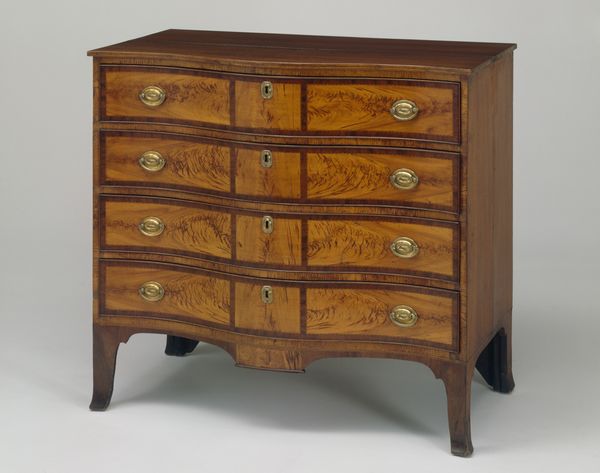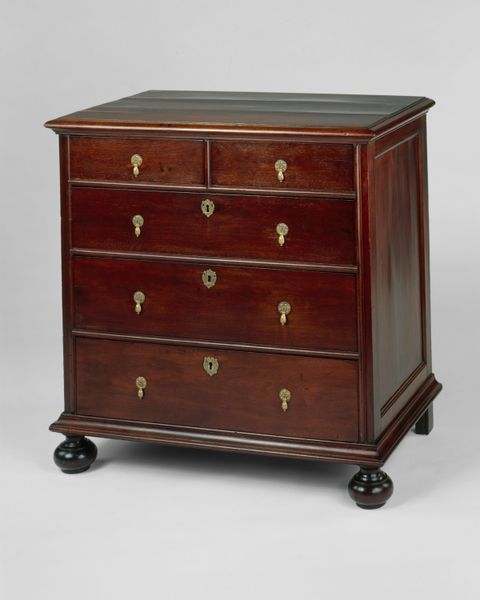
drawing
#
simple decoration style
#
drawing
#
pottery
#
shelf placement
#
stoneware
#
wooden interior design
#
home decor
#
wooden texture
#
cardboard
#
brown colour palette
#
watercolor
Dimensions: overall: 26.1 x 34.5 cm (10 1/4 x 13 9/16 in.)
Copyright: National Gallery of Art: CC0 1.0
Curator: This drawing, aptly titled "Bureau," comes to us from Rex F. Bush, and it's estimated to date around 1936. Bush rendered it using what appears to be watercolor, and it depicts, quite simply, a dresser. Editor: My first thought is: mahogany! Or at least, the illusion of it. The layering in the watercolor gives such depth, imitating the polish and grain of fine wood. But, of course, it isn't wood itself. Curator: Precisely. While it's a representation, let's consider what the bureau, or this depiction of it, signified then. Often, furniture styles mirrored social aspirations. Note the stylized feet: claws gripping spheres. This motif connects to ideas of strength, ownership, almost a predatory hold. Editor: I find that really fascinating, especially contrasted against the seemingly humble medium of cardboard and watercolor. We're seeing aspiration meticulously rendered with everyday materials. It’s about class maybe? The tension between wanting and having, crafted during the Depression. Curator: Indeed! Think of the color palette; primarily brown. It creates a feeling of earthy stability but maybe also hints at the resourcefulness and constrained choices dictated by economic circumstances. Notice the deliberate simplicity, almost a conscious rejection of more extravagant decorative styles that might’ve symbolized other types of socioeconomic power at that time. Editor: What interests me further is how this work highlights process. Watercolor allowed for a very deliberate building up of the depiction of an item most likely born from industry, carved by artisans or crafted by a team. It poses questions about skill, labor, and value – where does true worth lie, and how does the method of its production and presentation alter that? Curator: A fitting end point for our considerations, then, reminding us of the layers of significance held within what may appear as simply a painted scene of furniture. Editor: I concur! Who knew that a humble dresser rendered in watercolor on board could speak volumes about ambition, material conditions, and cultural values? It's a testament to the enduring power of observation and artistic intention.
Comments
No comments
Be the first to comment and join the conversation on the ultimate creative platform.
